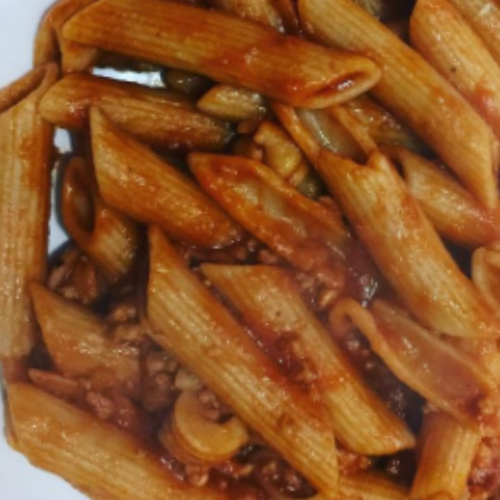Step-by-Step Method
Prepare the Ingredients
Start by finely chopping the onion, carrots, celery, and garlic. These will form the base of your ragu and provide great flavor.
Brown the Meat
In a large pot or Dutch oven, heat the olive oil over medium heat. Add the wild boar meat (or your chosen substitute) and season with salt and pepper. Sear the meat until browned on all sides, about 5-7 minutes. Remove the meat from the pot and set aside.
Sauté the Vegetables
In the same pot, add the chopped onion, carrots, and celery. Sauté for about 5 minutes until the vegetables are softened. Then add the minced garlic and cook for another minute until fragrant.
Deglaze with Wine
Pour in the red wine, scraping up any browned bits from the bottom of the pot. This step adds depth to your ragu. Allow the wine to reduce for about 5 minutes.
Add the Tomatoes and Herbs
Stir in the crushed tomatoes, tomato paste, dried oregano, thyme, bay leaf, and the reserved meat. Bring the mixture to a simmer, then reduce the heat to low. Cover the pot and let it cook gently for about 1.5 to 2 hours. Stir occasionally and add a little water if it becomes too thick.
Cook the Pasta
About 10 minutes before your ragu is done, bring a large pot of salted water to a boil. Cook the pasta according to the package instructions until al dente. Drain and reserve some pasta water.
Combine the Pasta and Ragu
Remove the bay leaf from the ragu. Add the cooked pasta to the pot with the ragu and toss to combine. If the sauce is too thick, add a bit of the reserved pasta water to reach your desired consistency.
Serve
Plate the pasta and ragu mixture and top with grated Parmesan cheese and fresh parsley if desired.
Variations
Different Meats: If wild boar isn't available, you can substitute it with beef, pork, or even turkey for a leaner option.
Vegetarian Option: For a vegetarian ragu, use a combination of mushrooms and lentils as a meat substitute.
Spice it Up: Add a pinch of red pepper flakes for some heat.
